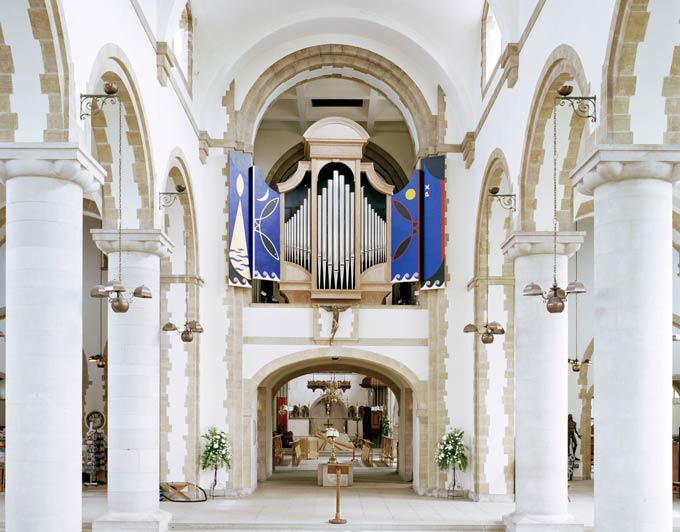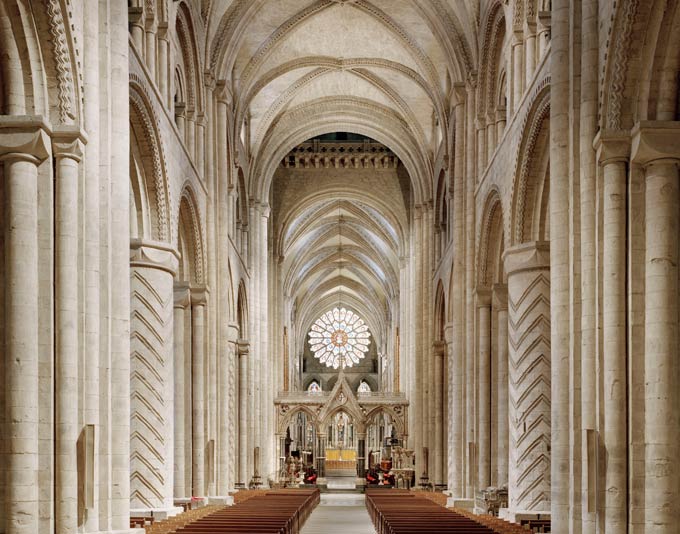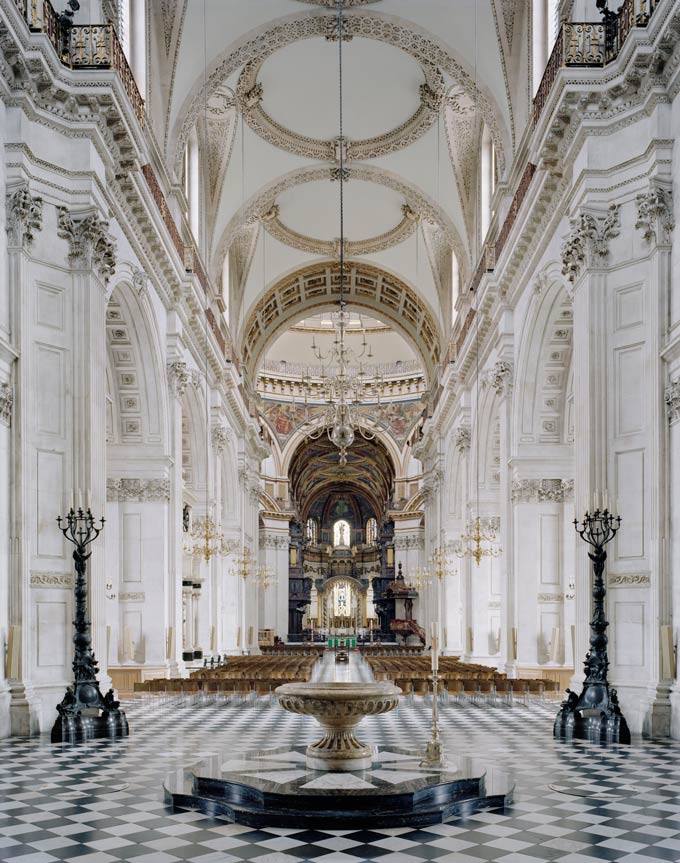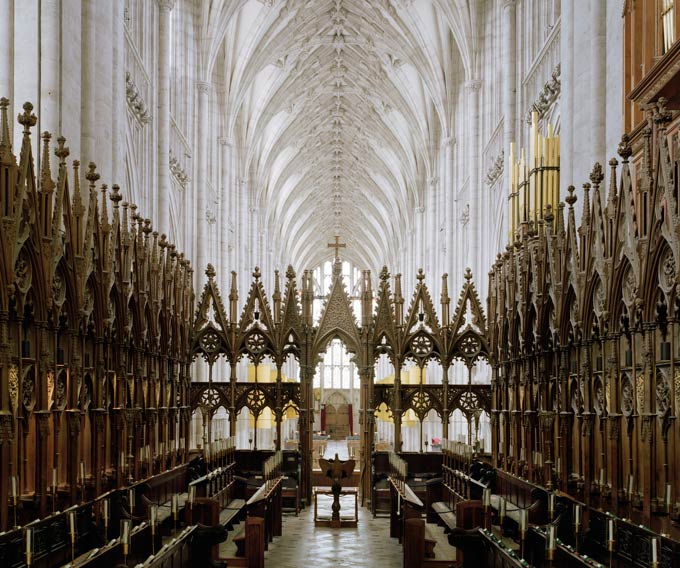The interiors of England’s 42 Anglican cathedrals are strikingly different. We examine the history and design of these majestic buildings with award-winning photography by Peter Marlow.
 WELLS, SOMERSET
WELLS, SOMERSET
Wells takes its name from the spring that gushes from the ground to the east of the present cathedral. The current cathedral was begun in the 1170s, erected on a site that has enjoyed a rich religious history – a church was first built here in the early 8th century. Today the view down the nave is remarkable for the enormous scissor arches inserted in the 14th century to support the weight of the central tower. “It is very boldly conceived, resulting in an appealing, satisfying relationship,” says historian John Goodall. “The entire interior is very typical of French-inspired 13th-century English architecture – French detail is an English obsession.”
 PORTSMOUTH, HAMPSHIRE
PORTSMOUTH, HAMPSHIRE
Portsmouth’s cathedral is largely a 20th-century structure, but the choir is 13th century, and the tower was rebuilt after the English Civil War of 1642–1651, making this cathedral a very complicated collection of buildings. “It emulates 17th-century church forms,” says Goodall. “It is a light space dominated by an organ in its modern shutters. It’s beautiful and offers serenity.” The organ was only completed in 2001, and the paintings are by iconic British artist Patrick Caulfield, giving the cathedral a distinctly modern feel.
 DURHAM, COUNTY DURHAM
DURHAM, COUNTY DURHAM
One of the most spectacular examples of European Romanesque architecture, the Durham Cathedral that we see today was begun in 1093. This picture, although beautiful, shows the interior artificially lit, something that Goodall believes diminishes the true effect. “You lose the gloom,” he says. “That is not meant to be negative; cathedrals are not historically functional buildings – they were conceived to be beautiful forms. The way in which light falls within them is an important element of their design. In Durham, your eye should be drawn into the darkness as you look along the length of the interior. That is part of its magic.”
 COVENTRY, WEST MIDLANDS
COVENTRY, WEST MIDLANDS
Coventry Cathedral was built between 1956 and 1962 on the site where the medieval church of St Michael was bombed during World War II. The medieval spire remains. The interior is a modern masterpiece. It may look as though there are no windows in the cathedral, but this is because they all face towards the high altar. “Those almost impossibly attenuated columns taper down and are joined to the floor simply by metal bolts,” explains Goodall. “So it actually looks as though those columns float to the ground.”
 ST PAUL’S, LONDON
ST PAUL’S, LONDON
It’s often hard to convey the sheer scale of St Paul’s, although it’s interesting to remember that it is considerably smaller in every dimension than the medieval cathedral it replaced after the Great Fire of London in 1666. Sir Christopher Wren was appointed to rebuild the cathedral, and it was completed in 1711. The interior was originally incredibly austere as was fitting for a cathedral in the capital city of a deeply Protestant nation. “All that decoration, apart from the choir stalls, is 20th century,” says Goodall. “Ironically, the detailed baldachin over the high altar makes it look rather like St Peter’s in Rome. Its ornateness would have appalled an 18th-century congregation.”
 WINCHESTER, HAMPSHIRE
WINCHESTER, HAMPSHIRE
Winchester Cathedral was founded in the mid-7th century, but the present building was begun in 1079 and served by a community of Benedictine monks. This striking image shows the view from the choir westwards down the nave. “This is actually not a coherent building,” says Goodall. “It’s an 11th-century structure constrained in all kinds of ways. The nave has been shortened since the 11th century and this vaulting was thrown over the top in the late 14th century; it’s rich in the detailing that was typical of the time. The vaults have turned into a wonderful star-shaped pattern. The idea of articulating structure for aesthetic effect is at the heart of the Gothic style.”





 © 2024
© 2024